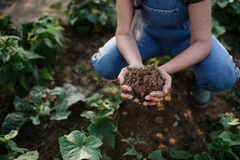Researchers propose polyethylene rafts for improved oyster farming
26 Aug 2024 --- Scientists at the Osaka Metropolitan University (OMU) in Japan have developed a numerical analysis technique of the motion in waves to propose the use of polyethylene (PE) raft in aquaculture facilities. The alternative can keep costs manageable and is about five times more durable than a traditional bamboo raft.
The study’s findings can impact the rising aquaculture industry, as consumer demand for edible seafood grows worldwide. Sustainable aquaculture is also being sought more, with the seafood industry tapping into aquaculture more than traditional fishing for the first time to meet the world’s rising aquatic food demand, according to the UN’s State of World Fisheries and Aquaculture.
Conventional oyster farming uses bamboo rafts with additional flotation devices, such as Styrofoam. Although relatively affordable, these rafts can be damaged by natural disasters like typhoons.
“The numerical analysis technique developed in this research is expected to be applicable not only to oysters, but also to the performance evaluation of aquaculture ponds,” says Yasunori Nihei, associate professor at the OMU Graduate School of Engineeringat Nihei, who led the research.
“We hope our efforts will contribute greatly to the future growth of the aquaculture industry.”
Testing efficiency
The scientists conducted the numerical analysis and verified the performance by building a “test model” of the polyethylene raft.
 The affordable, sturdier PE raft proposed by the researchers (Image credit: Osaka Metropolitan University).Published in Ocean Engineering, the researchers also analyzed the numerical model’s sensitivity analysis to elucidate the performance of the “highly flexible polyethylene rafts” for oyster farming.
The affordable, sturdier PE raft proposed by the researchers (Image credit: Osaka Metropolitan University).Published in Ocean Engineering, the researchers also analyzed the numerical model’s sensitivity analysis to elucidate the performance of the “highly flexible polyethylene rafts” for oyster farming.
Beyond bamboo
The study states that enhancing the materials and structure of oyster rafts may improve their wave resistance performance.
For instance, in a demonstration test, previous studies have examined the resistance of fiber-reinforced plastic (FRP) oyster rafts to damage as an alternative material to bamboo.
“The demonstration test showed that bamboo rafts were damaged 30–40% of the time, but FRP rafts were not damaged at all.”
While the utilization of FRP for rafts has proven to improve the resistance to breakage, there is still a problem of increased cost.
“As a new material, PE rafts have been developed, which have a long service life, are recyclable, and have been used in the sea for many years. The problems with bamboo rafts can potentially be solved with PE rafts,” notes the study.
In other seafood advances, the EU eyed aquaculture improvement by leveraging offshore wind farms to grow seafood, including blue mussels, sugar kelp, oyster and sea lettuce earlier this year.















